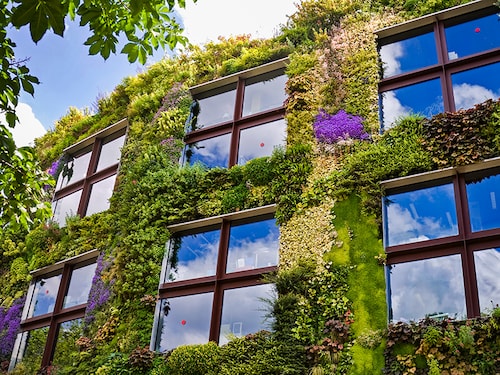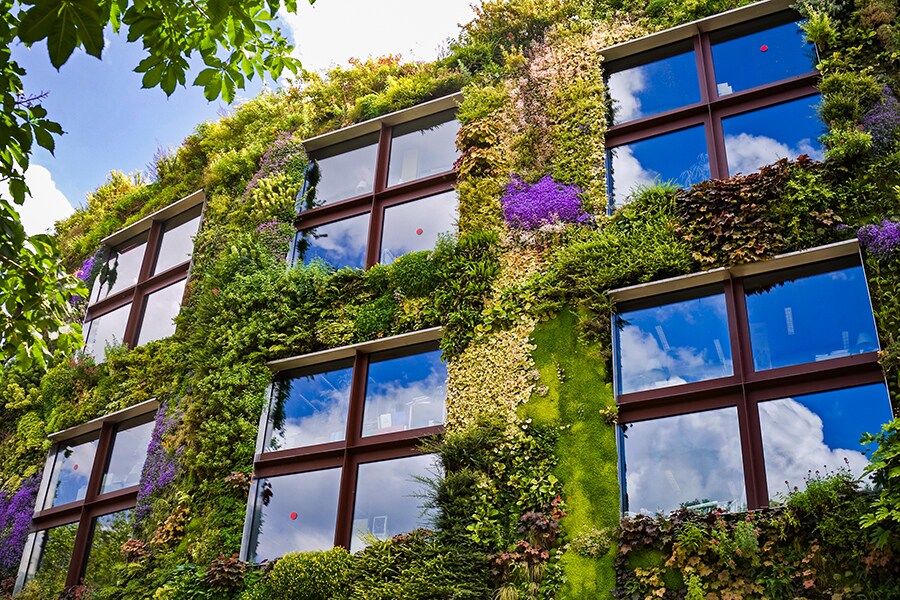Could green walls be a solution for building insulation?
This field study, conducted by researchers at the UK's University of Plymouth shows that green walls can reduce heat loss from buildings by about 30 percent


 The researchers point out that in the UK, buildings are directly responsible for 17 percent of greenhouse gas emissions.
The researchers point out that in the UK, buildings are directly responsible for 17 percent of greenhouse gas emissions.
Image: Shutterstock
A recent study shows that green walls can reduce heat loss from buildings by about 30%. In other words, they could be effective thermal insulators that could help reduce heating requirements.
This field study, conducted by researchers at the UK"s University of Plymouth, focused on a pre-1970s building (the University"s Sustainability Hub) and compared the heat-trapping capabilities of a conventional concrete and brick wall with those of a green wall. The living wall was developed from a system of flexible felt sheets with pockets into which soil and plants were added.
After five weeks of observation, the researchers found that the amount of heat lost through the green wall was 31.4% less than the original structure. The study also showed that daytime temperatures remained more stable within the green wall section. In other words, buildings with green walls should require less energy expenditure on heating, since they retain heat more effectively.
Published in the journal Building and Environment, the study is one of the first to evaluate the thermal influence of green wall systems on existing buildings in temperate regions. The researchers point out that in the UK, buildings are directly responsible for 17% of greenhouse gas emissions.
"Within England, approximately 57% of all buildings were built before 1964. While regulations have changed more recently to improve the thermal performance of new constructions, it is our existing buildings that require the most energy to heat and are a significant contributor to carbon emissions. It is, therefore, essential that we begin to improve the thermal performance of these existing buildings," said Dr Matthew Fox, a researcher in sustainable architecture and the study"s lead author, quoted in a news release. Adding living walls as thermal insulators could therefore be one of the solutions.
Globally, building-related emissions reached 9.95 gigatonnes of CO2 in 2019, according to figures from the UN. When adding building construction industry emissions, the sector"s carbon footprint accounts for 38% of all energy-related CO2 emissions. To achieve net-zero carbon building stock by 2050, these emissions would have to be cut in half by 2030, the UN reports.
First Published: Dec 09, 2021, 18:33
Subscribe Now